|
|
|
Sort Order |
|
|
|
Items / Page
|
|
|
|
|
|
|
| Srl | Item |
| 1 |
ID:
065209
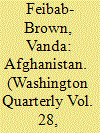

|
|
|
| 2 |
ID:
076915
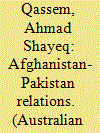

|
|
|
|
|
| Publication |
2007.
|
| Summary/Abstract |
When the Taliban regime was overthrown in Afghanistan in late 2001, there was much optimism that, with the anticipated and unprecedented economic, political and military engagement of the international community with Afghanistan, the country would become stable. However, resurgent violence indicates that this is not happening. An important reason for the continuing instability lies in the fact that the international effort has failed to address longstanding disagreements between Afghanistan and Pakistan - the Durand Line border dispute and the Pushtunistan issue - which in turn impairs the two countries' cooperative capacity in the anti-Taliban campaign. Resolution of these disputes would go a long way to help the situation. This article analyses the dynamics of the border dispute, the Pushtunistan issue and the Taliban insurgency as an outgrowth of longstanding historical disputes between Afghanistan and Pakistan
|
|
|
|
|
|
|
|
|
|
|
|
|
|
|
|
| 3 |
ID:
130865
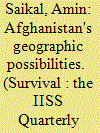

|
|
|
|
|
| Publication |
2014.
|
| Summary/Abstract |
Afghanistan's geostrategic potential is hampered by domestic weakness, regional tensions and major-power competition. Historically, Afghanistan's position at the junction between Asia and Europe has not only made it susceptible to outside invasions and influence, but also rendered it an important conduit for cross-continental interactions. The Greco-Bactrian (250-150 BCE), Kushan (30-375 AD) and Sassanid (224-651 AD) empires derived much of their wealth from the Silk Road, a series of interlinked trading networks criss-crossing the Eurasian land mass and centred around what is now known as Afghanistan. These routes served as the main arteries of east-west trade and transportation, until the disintegration of the Mongol Empire in 1368 AD effectively dismantled the network.
|
|
|
|
|
|
|
|
|
|
|
|
|
|
|
|
| 4 |
ID:
056920
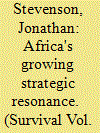

|
|
|
|
|
| Publication |
2003.
|
| Description |
p153-171
|
|
|
|
|
|
|
|
|
|
|
|
|
|
|
|
| 5 |
ID:
084938
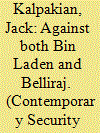

|
|
|
|
|
| Publication |
2008.
|
| Summary/Abstract |
The question about the relationship between al-Qaeda and terrorist organizations operating at the national, regional and international levels has been at the centre of the debate concerning appropriate policy responses to both. Debates focus on the question whether to treat terrorism mostly as a home-gown, grassroots phenomenon, or something significantly inflamed by foreign encouragement and sponsorship. Evidence from Morocco suggests that the national and regional terrorist organizations exhibit varying degrees of affiliation with al-Qaeda, ranging from acting as local franchises to complete independence.
The Moroccan state's response to this flexible situation is evaluated in the three case studies, each reflecting the case of terrorist organization or cell that has been dismantled. They show that Moroccan anti-terrorism policy has been generally successful, despite some erosion in human rights. The framework used in the study examines the sequence of events that led to the dismantling of the organization studied, the demographics of its membership, its ideology, and its targets. The holistic response, which combines heightened levels of law enforcement, socio-economic reform, and religious restructuring, is helping Morocco with its war against both domestic and international terrorism and may offer hints for counterterrorism elsewhere.
|
|
|
|
|
|
|
|
|
|
|
|
|
|
|
|
| 6 |
ID:
080538
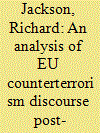

|
|
|
|
|
| Publication |
2007.
|
| Summary/Abstract |
This article examines the main characteristics and evolution of European Union counterterrorism discourse, primarily through a comparison with United States counterterrorism discourse since September 11. It argues that while both actors share a great deal in common in the language they employ about terrorism, there are a number of subtle but highly significant differences. The article also argues that there have been a number of important evolutions in the discourse of EU officials over the past five years. The article concludes that the nature and construction of official EU terrorism discourse has a number of important analytical, normative and practical implications, not least because it rests upon a series of highly contested assumptions and narratives about the nature and causes of the terrorist threat
|
|
|
|
|
|
|
|
|
|
|
|
|
|
|
|
| 7 |
ID:
080338
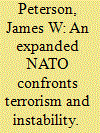

|
|
|
|
|
| Publication |
2007.
|
| Summary/Abstract |
Recent expansion of NATO to include new members is inextricably linked to the twenty-first century battle against terrorism and instability. The sharp increase in membership after 1999 offered new capabilities to the alliance but also created additional complications and challenges in that battle. The new members played an immediate role in critical operations in Iraq, Afghanistan, Kosovo, and Bosnia. They enhanced alliance capabilities such as the NATO Reaction Force. Plans developed for possible location of U.S. military bases in new alliance partners such as Poland and the Czech Republic. NATO leaders expanded the Partnership for Peace Program to Serbia, Montenegro, and Bosnia-Herzegovina. In fact, transformation of NATO from an organization designed to counter the Soviet threat into an alliance that managed the battle against terrorism in Afghanistan had taken place by late 2006. At the same time, the costs that accompanied the deepened involvement in the current struggle against violence and instability raised profoundly difficult questions for both publics and governments in the new member states
|
|
|
|
|
|
|
|
|
|
|
|
|
|
|
|
| 8 |
ID:
057440
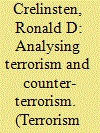

|
|
|
| 9 |
ID:
019512


|
|
|
|
|
| Publication |
2001.
|
| Description |
159-181
|
|
|
|
|
|
|
|
|
|
|
|
|
|
|
|
| 10 |
ID:
098722
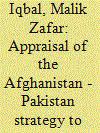

|
|
|
| 11 |
ID:
106178
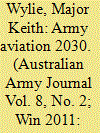

|
|
|
| 12 |
ID:
061899
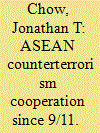

|
|
|
|
|
| Publication |
Mar-Apr 2005.
|
|
|
|
|
|
|
|
|
|
|
|
|
|
|
|
| 13 |
ID:
130235
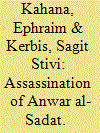

|
|
|
|
|
| Publication |
2014.
|
| Summary/Abstract |
Within the context of intelligence, the assassination of Egypt's President Muhammad Anwar al-Sadat on 6 October 1981 can be characterized as both a symbolic security failure and a failure to implement professional security principles by those responsible for guarding his life.
The circumstances creating the security "hole" were not confined to the short period preceding the assassination, but rather began long before, as part of an intense clash between two conflicting forces: extreme Islam and modern statehood.
In contrast to prevailing opinion, the apex of the struggle between these two forces is the main reason for the assassination, and not Sadat's peace with Israel. 1 The assassins of the al-Jihad group, springing unchecked from the substratum of fundamentalist Islam, carried out their work resolutely, exploiting the circumstances with almost incredible ease.
The sixth of October, observed in Egypt as a day of military triumph over the Israel Defense Forces (IDF) in the October 1973 War (the Yom Kippur War), is celebrated as an official holiday at the Grave of the Unknown Soldier on the outskirts of Cairo. On that date in 1981, on the reviewing stand stood President Sadat and his entourage: Vice President Hosni Mubarak; Defense Minister Mohammad Abu-Gazala; members of parliament; and members of the diplomatic corps, among them Israeli Ambassador Moshe Sassón.
Mirage fighter planes flew in celebratory formation above, and all in attendance were occupied with watching them and the huge parade passing before the reviewing stand, as columns of soldiers marched past the proud president.
When it was the artillery unit's turn to pass, a military truck stopped suddenly, from which four uniformed men sprang. Thinking this was part of the pageantry, no security personnel acted to prevent them from approaching the reviewing stand. One of the men quickly threw a grenade that did not explode, followed by more grenades. The assassins cocked their weapons and charged, firing at those on the reviewing stand.
The speed and suddenness with which the assassination was carried out resulted in pandemonium. People ran in all directions to take cover while Sadat stood, stiff and in shock, making him a clear target for sniper Hussein Abbas, 2 who shot him in the neck and chest. Sadat collapsed on the spot, yet this did not prevent another assassin, Abed al-Hamid, from emptying the rest of his rifle's magazine unhindered to confirm the kill. Sadat was flown by Gazelle helicopter to the Armed Forces Military Hospital at Ma'adi, but he arrived with no pulse, as his chest and arteries had been fatally penetrated.
The individual responsible for the assassination was Captain Khalid al-Islambouli. The fact that he and his partners managed to carry out this "inside job," despite explicit warnings having been received of threats on the president's life at the parade, testifies to a complete absence of common sense on the part of the Egyptian security sector.
The head of the Israeli security unit and lead investigator of the assassination, who was also responsible for Ambassador Sasson's rescue, was Avraham Rotem. According to Rotem, some members of Sadat's security detail were known to Rotem's unit personally due to previous reciprocal visits between Israeli and Egyptian personnel. 3 For this reason, the part played by Egyptian security personnel that day remains a mystery, due precisely to Israel's familiarity with them and the fact that they had acquired their security expertise from the best American instructional training. Sadat's assassination therefore raises a number of burning questions emanating from the fact that many in the upper Egyptian echelons knew that Sadat was in the opposition's crosshairs.
|
|
|
|
|
|
|
|
|
|
|
|
|
|
|
|
| 14 |
ID:
061661
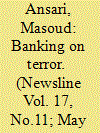

|
|
|
| 15 |
ID:
080866
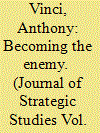

|
|
|
|
|
| Publication |
2008.
|
| Summary/Abstract |
The United States and Al Qaeda represent two fundamentally different forms of warfare. The US, with its basis in the Western way of warfare, relies on an almost totally instrumental form of warfare and Al Qaeda, with its basis in the Islamic way of warfare, fights an expressive, existential form of warfare. This paper illustrates how both sides' ways of warfare are converging toward each other. It also argues that this is in fact a good thing because it will allow the US to understand its enemy and thereby allow the US to defeat him in terms he can understand
|
|
|
|
|
|
|
|
|
|
|
|
|
|
|
|
| 16 |
ID:
054077
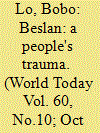

|
|
|
| 17 |
ID:
066011
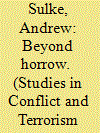

|
|
|
| 18 |
ID:
076420
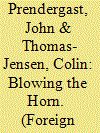

|
|
|
|
|
| Publication |
2007.
|
| Summary/Abstract |
The Greater Horn of Africa, the hottest conflict zone in the world, is a legitimate concern of U.S. officials. But their overwhelming focus on stemming terrorism there is overshadowing U.S. initiatives to resolve conflicts and promote good governance -- with disastrous implications for regional stability and U.S. counterterrorism objectives themselves
|
|
|
|
|
|
|
|
|
|
|
|
|
|
|
|
| 19 |
ID:
076971
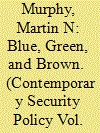

|
|
|
| 20 |
ID:
056786
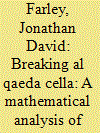

|
|
|
|
|
|
|
|